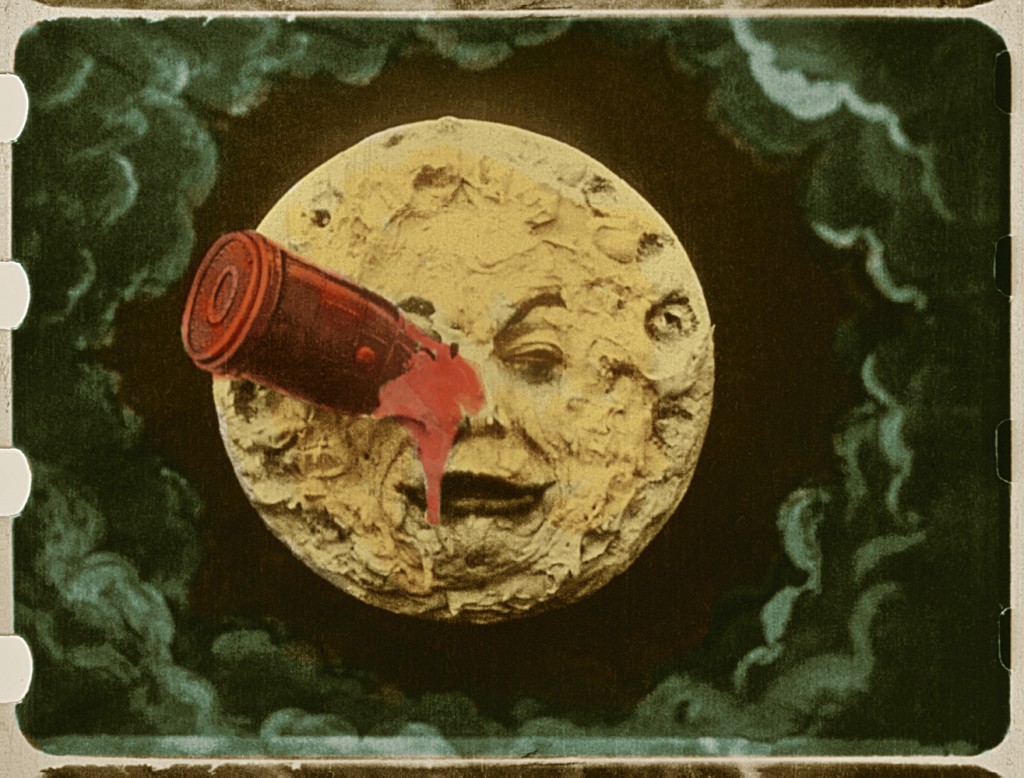
26 Ağu FRENCH FILMS COLORISTA
by Joshua Yumibe
Perhaps the earliest production work available to women in the film industry was coloring work—hand-coloring dyes onto film prints frame by frame. Female colorists were also common in the nineteenth century in the lantern-slide and postcard industries, for at least initially, they could be exploited at a lower wage than men to perform the repetitive and detailed tasks. By the mid-1890s, the film industry had adopted similar labor strategies for coloring prints. Aesthetic assumptions also grounded this practice: an enduring trope of western color theory pertains to the gendering of color—females have long been assumed to be more attuned to color. Women were not only cheaper in general to employ but also were thought to be, with their supposed sensitivity and nimble fingers, innately suited to the detailed work of coloring films.
Sources suggest that the Edison Company employed the wife of Edmund Kuhn in the mid-1890s to hand color prints such as the popular serpentine dance films (Yumibe, 45). According to Charles Edward Hastings, writing in the Moving Picture World in 1927, there were a number of other well-known female colorists working in the U.S. film industry at the turn of the century: “colorists in the early days were Miss Martini, of West Orange, N.J.; Miss Sarah Levy of New York City, and Miss Tompkins, of Brooklyn, N.Y. These famous hand colorists brought their art to a high degree of perfection, and displayed remarkable patience in working out their results” (346). However, scant documentation has been found about these women’s labor.
Mme ThuIllIer’s Company and MélIès
Fortunately, the recorded history is somewhat better for female colorists in France. Georges Méliès, for example, outsourced his hand-coloring work from 1897 to 1912 to a Vincennes firm in Paris run initially by Élisabeth Thuillier, and subsequently by her daughter Marie-Berthe Thuillier, who managed a workforce of over 200 female colorists (Mazeline 74n1; Fossati 122-123; Malthête, 6-9; Yumibe 48). An earlier version of this essay only identified Élisabeth Thuillier, but thanks to Stéphanie Salmon and Jacques Malthête’s wondrous discovery, reported here on the Women Film Pioneers Project, it was Berthe Thuillier who in fact headed up most of the film coloring work formerly attributed to her mother, who died in either 1904 or 1907 (Salmon and Malthête). The Thuillier firm began as a lantern-slide lab and became involved with film coloring in the late 1890s, also working for other companies and filmmakers such as Pathé and Raoul Grimoin-Sanson. In an interview in 1929, Berthe Thuillier recalls, “I colored all of Méliès’ films, and this work was carried out entirely by hand. I employed two hundred and twenty workers in my workshop. I spent my nights selecting and sampling the colors, and during the day; the workers applied the color according to my instructions. Each specialized worker applied only one color, and we often exceeded twenty colors on a film” (Mazeline 74n1, author’s translation). From Thuillier’s account, one can begin to surmise the complexity of the firm’s coloring operation. The Thuillier firm structured its workforce in assembly-line fashion, dividing the labor by hue to increase productivity. Based upon surviving Méliès prints and fragments from the turn of the century, the colored results were remarkable.
Méliès continued to use hand coloring throughout the early 1900s; in contrast, beginning in 1903, the Pathé Company transitioned its color work from hand coloring to stenciling as part of a larger project to industrialize its production methods. Though still a manual process, stenciling facilitated the application of dyes to positive prints. Each color on a print had its own stencil, which laboriously was cut out frame by frame for the length of the coloring sequence. Once produced, the stencils could be reused on multiple prints, thus saving time and labor on lengthy print runs. As with hand coloring, Pathé hired women to prepare the stencils. Rapidly expanding in 1906, the company attempted to recruit the Thuillier firm to carry out this work exclusively for Pathé at its Vincennes factory. Élisabeth and/or (more likely) Berthe Thuillier initially signed with Pathé but then broke contract a few weeks later when it became apparent that they would have to share authority with one of Pathé’s chief colorists, Mme Florimond. Despite this setback, Pathé proceeded to expand its coloring workforce in 1906, more than doubling its female colorists from 80 to over 200 (Yumibe 78-90).
Women ColorIsts as the “hens of Pathé”
One of the more remarkable accounts of Pathé’s colorists is a 1984 interview with Germaine Berger by Jorge Dana in Positif in 1992. Along with her sister Lucie, Berger began cutting stencils for Pathé in 1911 at the age of 15. She had a strict upbringing and worked for her father (a furniture draughtsman) for several years before Pathé. Ironically, even when employed in the film industry, Berger was not allowed to go to the cinema—her only experience of film as a young woman was through stencil cutting. Mirroring her domestic life, the work day at Pathé was also highly regulated. Working in close quarters, Pathé’s colorists were not allowed to converse or socialize during the day. Nonetheless, Berger enjoyed the work, and because she and the other colorists grew remarkably adept at stenciling, they were well-paid by Pathé, receiving 21 francs per week, as opposed to the 15 francs averaged by less-specialized, male factory workers surrounding Pathé’s workshop. Thus, the stereotype that females are innately attuned to color worked to the economic advantage of Pathé’s skilled colorists. However, the work also came with its diminutive epithets: due to their nest eggs of well-deserved earnings, Berger and the other colorists came to be known around the Vincennes neighborhood as the “poules de chez Pathé [hens of Pathé].”
Image taken from : https://wfpp.columbia.edu/essay/french-film-colorists/
This article is taken from WFPP official website.


